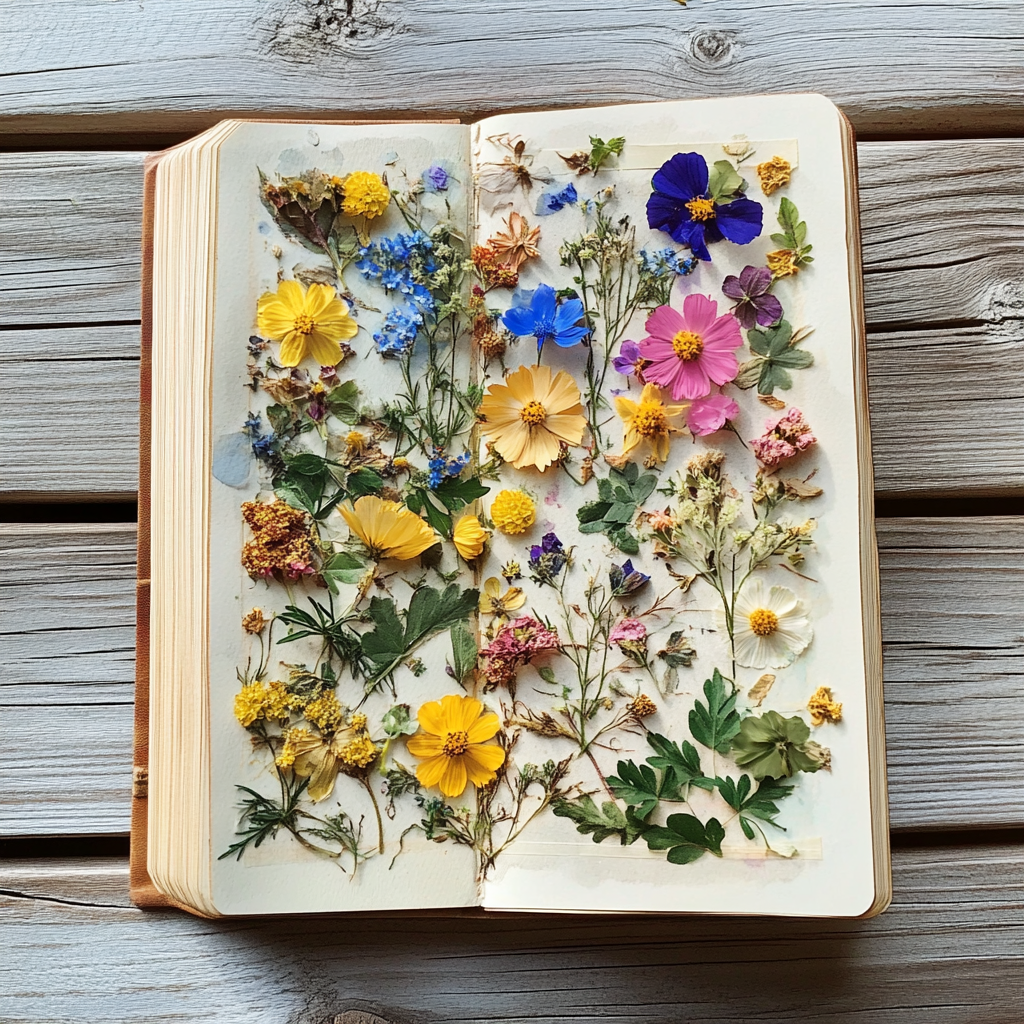How Crafting Can Decrease Stress and Anxiety: The Science Behind the Scissors ✂️

In a world where everything moves fast—notifications, deadlines, grocery lists—it’s no surprise that many of us feel mentally overloaded. Anxiety, stress, and burnout are on the rise across all age groups, especially for women juggling home, work, and caregiving.
But what if one of the most powerful tools for healing isn’t in a therapist’s office or a prescription bottle… but on your kitchen table?
Enter: crafting.
From junk journaling and painting to sticker-making and crocheting, creative expression through craft is not just a hobby—it’s therapy.
And science agrees.
In this post, we’re diving into how crafting can decrease stress and anxiety, backed by statistics, research, and real-world evidence. Whether you’re looking for a low-cost form of self-care or simply want a break from the madness, this is your permission slip to make something with your hands—and feel better while you do.
Table of Contents
- Stress & Anxiety: Why They’re Skyrocketing
- The Science of Crafting & the Brain
- Key Mental Health Benefits of Crafting
- Stats & Studies That Prove It Works
- Real Stories: Women Who Craft for Calm
- Why Printable Crafts Are Perfect for Beginners
- Getting Started: Low-Stress Crafts to Try Today
- Final Thoughts: Permission to Create
- References & Resources
1. Stress & Anxiety: Why They’re Skyrocketing
Let’s start with the not-so-fun part: the problem.
- Over 40 million adults in the U.S. suffer from anxiety disorders, according to the Anxiety & Depression Association of America (ADAA).
- Women are twice as likely as men to experience anxiety disorders (ADAA, 2021).
- 77% of people report experiencing stress that affects their physical health (American Institute of Stress, 2022).
- The average adult checks their phone 96 times a day (Asurion Research, 2023).
Between work, caregiving, social media, financial pressures, and just existing in modern life—it’s no wonder our nervous systems are exhausted.
The good news? Research shows that engaging in creative activity like crafting can significantly reduce those symptoms.
2. The Science of Crafting & the Brain
Crafting isn’t just cute—it’s neurologically calming.
When you engage in repetitive, creative actions like coloring, cutting, sewing, or painting, something remarkable happens in your brain:
🧠 You Enter a Flow State
Coined by psychologist Mihaly Csikszentmihalyi, “flow” is a meditative-like state of deep focus and enjoyment. It’s linked to:
- Increased dopamine (your brain’s feel-good chemical)
- Decreased activity in the amygdala (your brain’s fear center)
- Higher engagement and present-moment awareness
🧘♀️ Your Stress Hormones Drop
A 2016 study in Art Therapy: Journal of the American Art Therapy Association found that 45 minutes of art-making reduced cortisol levels (a primary stress hormone) in 75% of participants.
❤️ You Activate the Parasympathetic Nervous System
Crafting helps shift your body from fight-or-flight mode into rest-and-digest mode. That’s when healing, clarity, and calm can begin.
3. Key Mental Health Benefits of Crafting
Let’s break down exactly how crafting helps your mental health:
1. Stress Relief
Focusing on colors, textures, and steps grounds you in the present moment—reducing anxiety about the future or regrets from the past.
2. Improved Mood
Crafting has been shown to increase serotonin and dopamine levels—neurotransmitters that regulate mood, motivation, and pleasure.
3. Boosted Self-Esteem
Completing a craft project—even a small one—offers a sense of accomplishment, pride, and capability. It’s especially powerful when you’re feeling stuck or overwhelmed.
4. Distraction From Negative Thoughts
Crafting interrupts the cycle of overthinking and rumination. It gives your mind something gentle and constructive to focus on.
5. Increased Mindfulness
You don’t have to sit cross-legged to meditate. Crafting naturally encourages non-judgmental awareness of the present moment—one snip or brushstroke at a time.
4. Stats & Studies That Prove It Works
Need more proof? Let’s look at the data.
- A study from the Journal of Positive Psychology (2016) found that people who engaged in creative activities like knitting, crafting, or journaling reported higher levels of happiness and flourishing the next day.
- In a survey of over 3,500 knitters, 81% said knitting made them feel happier. Those who knit more often reported higher cognitive functioning and decreased sadness (British Journal of Occupational Therapy, 2013).
- 61% of U.S. adults say they use creative activities to help manage stress (NAMM Foundation, 2021).
Whether it’s a quilt, a junk journal, or a printable sticker sheet—the act of creating is a powerful wellness tool.
5. Real Stories: Women Who Craft for Calm
Let’s bring the stats to life. Here are a few stories from women in our Maker Beautiful community:
✨ Jen, 39 – Florida
“I started junk journaling after my divorce. I thought it was just going to be a fun way to scrapbook, but it became my therapy. Cutting, gluing, layering—it helped me process my feelings without needing to talk.”
✨ Maria, 52 – California
“As someone who struggles with anxiety and doesn’t love traditional therapy, crafting gives me something to look forward to. When I’m in a spiral, I print out one of the journaling kits and just start. The Pretty Tea Party pack was my favorite so far.”
✨ Amira, 27 – Texas
“I used to think crafts were for kids. But when I was recovering from burnout, crafting gave me peace in a way nothing else did. I now keep a little journal station at my desk.”
6. Why Printable Crafts Are Perfect for Beginners (and Stress Relief)
Printable crafts are uniquely calming because they eliminate the biggest stressors that often keep people from starting:
- ❌ No need to shop for expensive supplies
- ❌ No pressure to make “perfect” art
- ❌ No need for fancy tools or tons of space
Instead, you get:
- ✅ Ready-to-use templates
- ✅ Beautiful designs you can personalize
- ✅ Low-cost creativity at your fingertips
- ✅ Instant access (print and start today!)
That’s why we created the Pretty Tea Party Printable Craft Starter Pack—to help women step into creativity gently, without pressure or overwhelm.
7. Getting Started: Low-Stress Crafts to Try Today
If you’re new to crafting or just want something simple to ease into, start here:
🫖 Junk Journaling with Printables
Use a themed printable kit (like our tea party one!) to layer papers, add stickers, and tuck in notes. No rules. Just beauty.
🎨 Adult Coloring Pages
Print calming patterns and use colored pencils or markers to relax your mind.
✂️ Printable Paper Crafts
Make envelopes, paper flowers, tags, and pockets from print-at-home kits.
🧵 Cross-Stitch or Hand Sewing
The repetitive motion of stitching is deeply meditative and great for nervous energy.
🧘♀️ Affirmation Card Decks
Print, cut, and shuffle a deck of positive phrases to use daily.
8. Final Thoughts: You Don’t Need to Be “Creative” to Heal
Here’s the truth:
You don’t need to be an artist.
You don’t need expensive supplies.
You don’t even need to know what you’re doing.
You just need to start.
Crafting is about connecting with yourself—your hands, your heart, your story.
So if you’re feeling overwhelmed, scattered, or just worn out by life… pick up some scissors. Print something beautiful. Let yourself play.
You deserve it.
💌 Ready to Craft Your Calm?
We’d love to send you a free printable pack to get started:
🎀 Pretty Tea Party Printable Craft Starter Pack 🎀
A cozy, feminine printable bundle with:
☕️ Vintage journaling pages
📬 Printable envelope + tea ephemera
💐 Printable sticker sheet
🫖 Soft pastel vibes to soothe your soul
Print it today and start crafting your way back to calm.
👉 Click here to download your free kit now!
9. References & Resources
- American Institute of Stress. (2022). Stress Statistics
- ADAA: Anxiety and Depression Association of America. (2021). Understanding the Facts
- Art Therapy: Journal of the American Art Therapy Association. (2016). Reduction of Cortisol Levels After Art Making
- The Journal of Positive Psychology. (2016). Everyday creativity and well-being
- British Journal of Occupational Therapy. (2013). Knit for well-being: Findings from a survey
- NAMM Foundation. (2021). Creativity & Mental Health Report
Disclaimer:
This blog post is intended for general informational and inspirational purposes only. It is not a substitute for professional medical advice, diagnosis, or treatment. If you are experiencing persistent anxiety, depression, or mental health challenges, please consult with a licensed healthcare provider. If you are in crisis or need immediate help, contact emergency services or a mental health hotline in your area.
You are never alone—and help is always available. 💖


